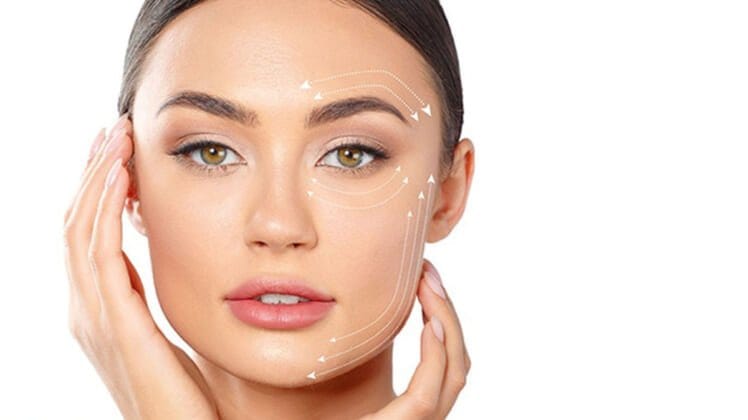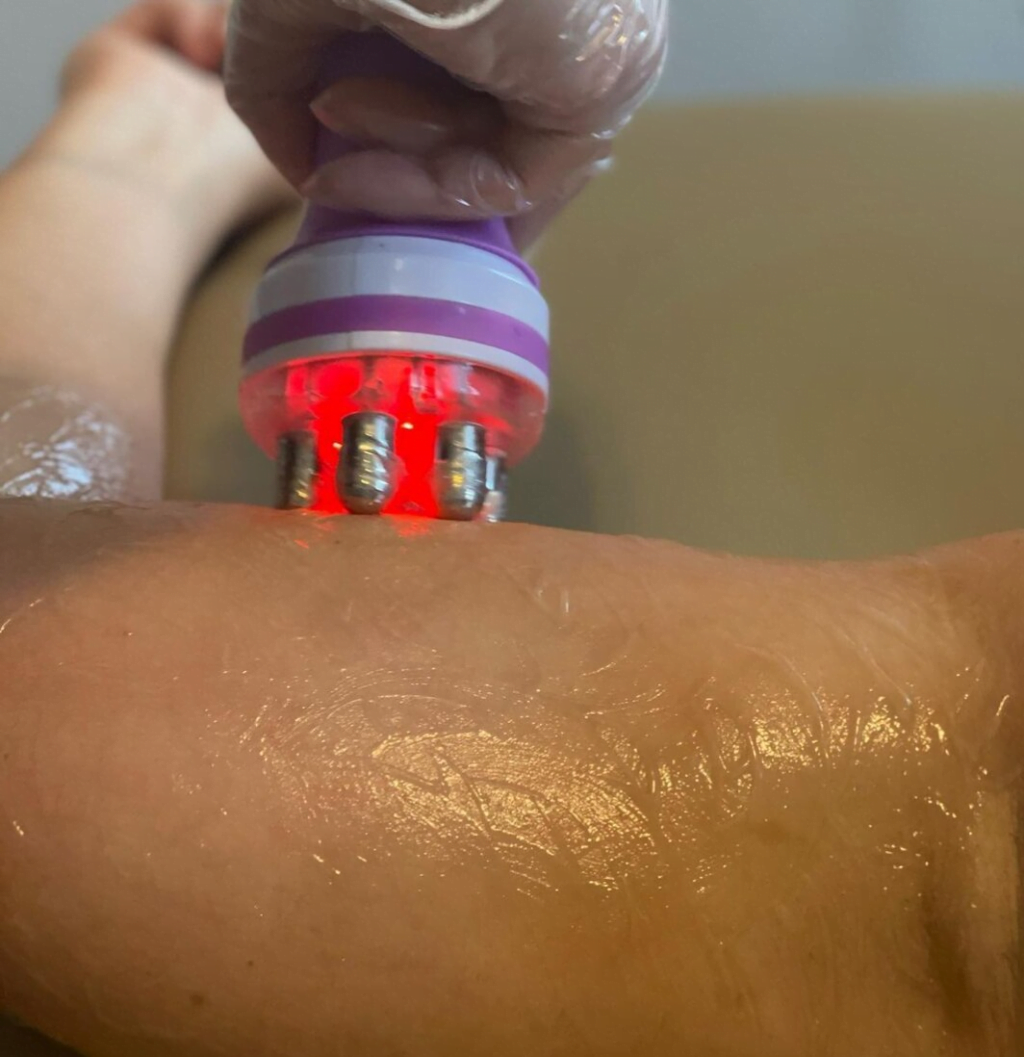
Radiofrequency skin tightening is a super popular, non-invasive aesthetic procedure that comes with the enticing promise of zero downtime. The primary benefit is that it helps skin look firmer without having to slice, dice, poke, or puncture. “The goal is to melt fat as well as firm, tighten, and lift the skin,” explains Dr. Troy Pittman, MD, a board-certified plastic surgeon in Washington, D.C.
“With radiofrequency, the radio waves are passing through the skin’s epidermis to heat up the tissue beneath and elicit a controlled burn,” Dr. Pittman explains. “This triggers the body’s natural healing process which results in the production of more elastin, collagen, and hyaluronic acid.” Once the skin is healed, the final result is a firmer, tighter, and lifted appearance.
When used on the body, it can also have fat reduction benefits. Interested in learning more before booking a consultation? We’re giving you the full 411 on what radiofrequency skin tightening (RF) is, what the procedure feels like, what sort of results you can expect, and how much it costs.
The Benefits of Radiofrequency Skin Tightening
As mentioned above, radiofrequency sends thermal energy into the deeper layers of skin via a special device. Similar to other types of non-invasive or minimally invasive procedures (like microneedling), the goal is to create “micro injuries” at a cellular level.
Not only does this destroy fat cells, says Dr. Pittman, but it triggers the body’s natural healing process which results in the production of more elastin, collagen, and hyaluronic acid. That said, the biggest benefit of RF treatments is skin that looks and feels more youthful.
Another benefit of radiofrequency technology is that it’s very versatile. “It can be used head to toe and on all skin types,” says Dr. Erez Dayan, MD, a board-certified plastic and reconstructive surgeon at Advance Plastic Surgery Institute.
The most common areas treated include:
- Face
- Neck
- Abdomen
- Flanks
- Thighs
- Buttocks
- Knees
- Arms
“There are also increasingly popular radiofrequency treatments for areas such as the pelvic floor restoration,” Dr. Dayan adds.
Who’s a Good Candidate for RF Skin Tightening?
We’ll be straight with you: Not everyone is a candidate for RF skin tightening treatments. “The key thing with radiofrequency skin tightening is patient selection,” says Dr. Dayan. “I tell patients that their skin is like a rubber band. When they are young it has a brisk snap-back —AKA they have good elasticity. As patients age, their skin elastin declines and they become less ideal candidates for RF skin tightening.”
Other factors that can impact skin elasticity include pregnancies, weight fluctuations, and genetics.
The best candidate for RF skin tightening is:
- Ages 30 to 60
- Not seeking major weight loss
- Looking for subtle firmness and tightening versus extreme lift
- Lower body fat percentage
“The best candidates for RF are the ‘treatment gap’ group,” says Dr. Dayan. “These patients are typically not ideal candidates for fat removal procedures such as liposuction alone since they may have loose skin afterward. At the same, traditional procedures such as facelifts and tummy tucks are typically ‘overkill’ in this patient population.”
In that sense, RF is the optimal solution for those wanting moderate skin tightening while avoiding traditional surgical procedures that carry incisions and downtime.

What Does a RF Skin Tightening Treatment Feel Like?
All RF skin tightening treatments begin with the initial consultation to determine whether you’re a good candidate. During the actual procedure, the practitioner will mark the areas on your skin that are going to be treated.
“Next, the small paddles are attached to the skin of the target area to transmit the radio waves and allow them to penetrate the skin,” explains Dr. Pittman. “No local or other anesthesia is used and most patients only report feeling a mild warming sensation.” Patients equate the feeling to a hot stone massage, he adds.
Treatments can take anywhere from 15 minutes to an hour depending on the area being treated. And the best part is that you can drive yourself home and immediately resume normal activities. You might have some mild swelling and redness, but Dr. Pittman says this typically dissipates within two to 24 hours.

The Best Natural Skin Care in 2022
What Results Can You Expect?
As is the case with many aesthetic treatments, you’ll need to wait a bit for the full effect of your radiofrequency skin tightening treatments to kick in. You’ll also probably need to get a series of treatments (usually three to five).
Once the series is complete, it can take anywhere between six weeks and 12 weeks to see the results. Dr. Dayan says this is because the radiofrequency heating triggers a proliferative cascade biologically in the skin, causing more collagen and elastin to form.
“We have seen 30 to 40 percent skin tightening after radiofrequency treatments and this allows patients to avoid traditional surgical procedures with incisions and downtime,” adds Dr. Dayan.
Radiofrequency Skin Tightening Before and After
Are there any risks with RF?
As with any procedure, you’re probably wondering about potential radio frequency skin tightening dangers, and you’ll be happy to hear that the risks are low. Because RF is used for so many things, its impact on human health has been extensively studied, the American Board of Cosmetic Surgery notes. The most common adverse effects occur when the procedure is performed incorrectly and include burns and blistering. However, when performed by a board-certified surgeon or dermatologist, you should have nothing to worry about.
How Much Does RF Skin Tightening Cost?
The amount you pay for RF skin tightening depends on what areas are being treated, how many treatments you have, and where you’re located. Dr. Dayan says that treatment sessions typically range from $1000 to $1500 per session and that three to five sessions are usually recommended per area. Dr. Pittman concurs, saying that the total cost you pay is usually between $2500 and $5000, which is comparable with other non-invasive skin-tightening procedures.



